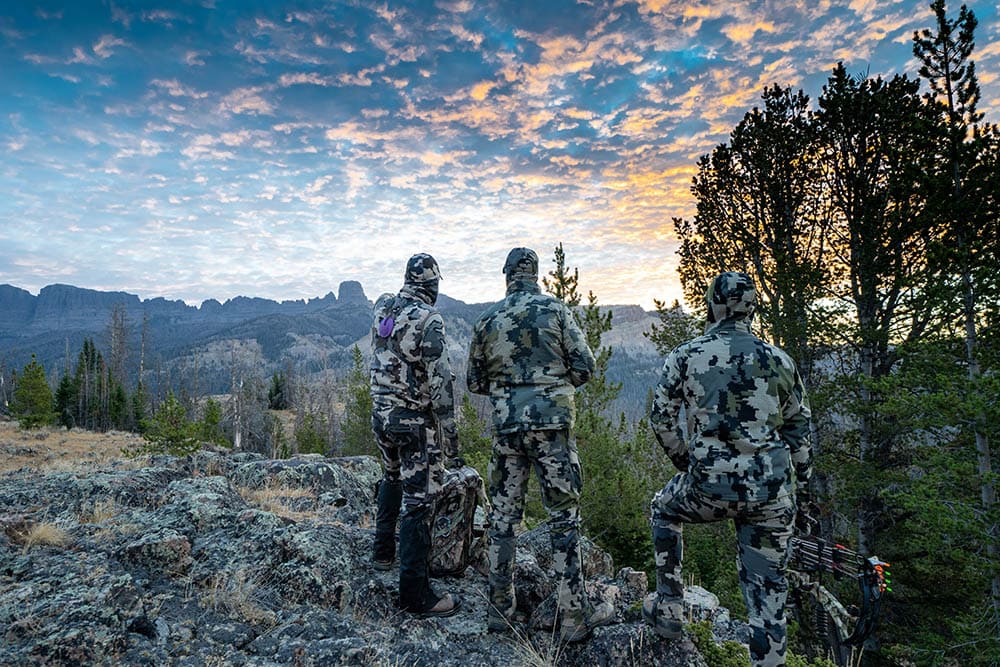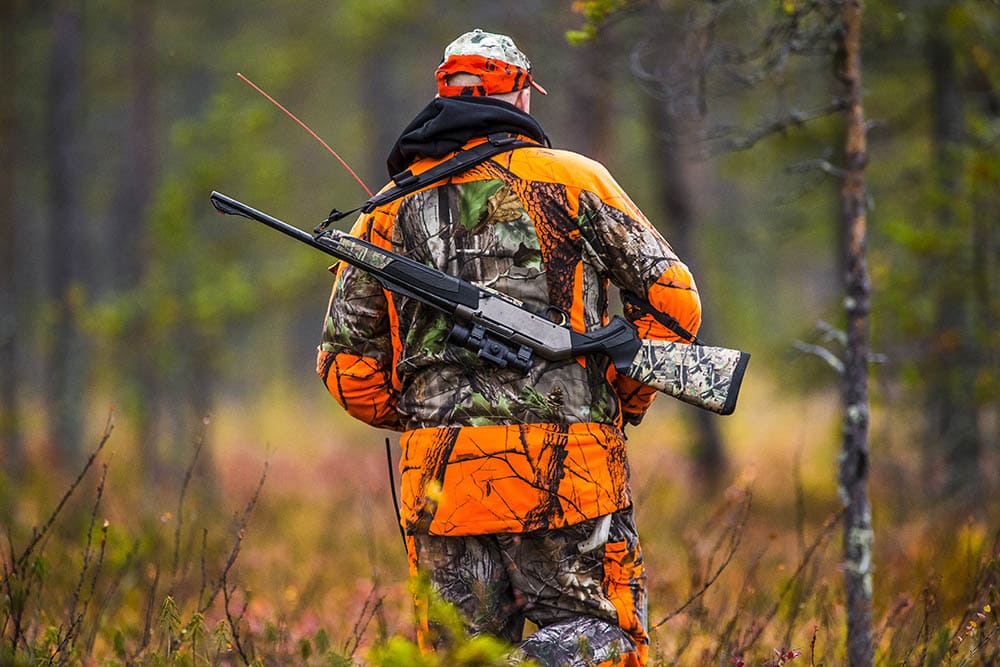Can You Hunt in National Forests? Everything You Need to Know
Last Updated on

Hunting in national forests is pretty common and allowed in several US states. But like national parks, you’d need to follow strict regulations when hunting in national forests. If you’ve experienced hunting on public lands, it will be easier for you to stick to the hunting rules for national forests.
The US Forest Service and state and local bodies require hunters to get a license for their hunting endeavors. Apart from that, you’re obliged to keep a check on the season, species, and areas when planning your hunting adventure.
Hunting in national forests is a dream for many living in densely populated suburbs. If you’ve decided to hunt certain species in the national forests, you need to know a few things before heading out.

Is Hunting Allowed in National Forests?
Yes, hunting is allowed in the national forests of several US states with strict rules and regulations. National forest hunting isn’t much different than public lands hunting, but some unique restrictions for seasons, areas, firearms, and species may exist depending on your state’s laws.
If you’re an amateur hunter, know that national forests are not exactly national parks. The major difference is that national forests come under the US Forest Service, a part of the US Department of Agriculture. On the other hand, national parks are supervised by the National Park Service, a division of the US Interior Department.
The US Forest Service manages around 190 million acres of public land, twice that of national parks. Summing up the total public land in 44 states, we get 155 national forests, one National Tallgrass Prairie, and 20 National Grasslands.
Another significant difference is that national forests serve numerous purposes, including fish, wildlife, grazing, recreation, and more. In contrast, national parks are managed to preserve the land and wildlife from adverse changes.

What Are the Best US National Forests for Hunting?
Hunters prefer national forests in the US for different reasons. While some forests are densely populated with wildlife, others have very few prey animals to hunt for. Thus, choosing the best national forests for hunting depends on your requirements and the degree of comfort.
Some popular US national forests to consider for hunting include:
- The Bitterroot National Forest, Idaho. This forest is home to many gaming animals for hunters, such as mule deer and elk, and more.
- Pisgah National Forest, North Carolina. This versatile forest has everything you need, from plenty of hunting opportunities to aesthetic views and diverse wildlife.
- The Shawnee National Forest, Illinois. With more than 3,000 acres of land, this national forest is a delight to explore and avail of different hunting opportunities. It also has over 500 miles worth of trails.
- The Cuyahoga Valley National Park, Ohio. Widespread at more than 100 acres of land, this park has the perfect forest for hunting a range of wildlife.
Not just these, you can find more national forests in the US waiting for you to explore them and benefit from attractive hunting opportunities.

National Forests Hunting Rules in the Different States
The rules for hunting in national forests may vary in several states. So, let’s have a look at some of them:
Alabama
Alabama is heaven for US hunters, with plenty of hunting opportunities and animal species. The state consists of national forests, spread widely throughout the entire landmass. Many of those national forest lands are for public hunting.
To hunt on these lands legally, hunters need to obtain a lifetime or annual permit verified from the nearest US Forest Service office. Remember that you can’t take down all animals in Alabama’s national forests except rabbits, raccoons, and squirrels.
Arizona
Hunting with a rifle or any other firearm is not allowed under the influence of drugs or alcohol. The hunter can’t even carry any amount of alcohol or narcotics while hunting. However, you can possess one unloaded gun when moving from one place to another during the hunting season.
California
In California, the law doesn’t allow hunting within national parks. The only exception is getting an authorized permit from the park superintendent before hunting. In case of violation, you’ll be subject to six-month prison time with a fine of $5,000–$25.000.
Wisconsin
Wisconsin is a land of plenty of opportunities for hunters and wildlife. The Department of Natural Resources (DNR) manages hunting in the state through the statewide permitting system.
To legally hunt on these lands, you’d need to acquire a yearly or five-year license for resident and nonresident deer hunting. After that, you will need to buy additional permits required to hunt specific animals, including turkeys, waterfowl, and bears.
The DNR collaborates with the US Forest Service to manage the state’s national forests. The US Forest Service offers to fund most land management in Wisconsin’s National Forests. In addition, the Corps of Engineers manages several waterways flowing through the state’s national forests.
Georgia
Georgia is a popular spot for hunters to take down a range of animals. These lands also provide full-proof privacy and a vast hunting area than public lands. To legally hunt in Georgia’s national forests, you’d need to get an authentic hunting license for your state.
In addition, you must have proper tags for every animal you hunt annually. You’d also need a permit to ride on any motorized vehicle on Georgia’s National Forest System lands. The only exception is the car transporting you to the forest.
The state allows disabled veterans to access specific areas of Chattahoochee National forest located north of Dicks Creek. However, they must have relevant permits, eliminating the need for a written permission letter. This should be done at least two weeks before entering the forests.

How to Hunt in the US National Forests
Dr. James C. Kroll describes the most appropriate way of hunting in the US national forests in his article published in North American Whitetail. In that article, he recalled one of his experiments on finding a whitetail buck in the national forests of Texas.
Dr. Kroll and his students went to Davy Crockett National Forest to conduct the research. This forest is one of Texas’s “most heavily hunted public lands in Texas.”
According to the article, Dr. Kroll and his student scouted the national forest and chose the best hunting place. This is what they did to hunt in the US national forests:
- First, find the national forest map of your state.
- Then, start mapping out your prey’s terrain and the spots where deer may be present. The best way to do this is to use the information that hunters know about deer and human behavior. For example, Dr. Kroll found that most hunters don’t stay at a distance of more than 1,500 feet from their vehicle when hunting. So, he used this information to identify hunting areas with low pressure.
- The next step is to scout the areas you mapped. You’d also have to identify the best ways to approach every area and know how the winds blow there. Stay sharp and keep an eye on water, rubs, and game trails.
- Finally, stay steadfast on your spot and go hunting if the conditions match your plan.

Conclusion
Hunting in US national forests is quite similar to hunting on public lands. However, you’d need a verified hunting license from the US Forest Service a few days before going out in the woods.
Before choosing any national forest as your spot, you must check out the animal species and hunting opportunities available there. Some of the leading national forests in the US include the Bitterroot National Forest, Pisgah National Forest, and the Shawnee National Forest.
The hunting laws vary in different states in the US. So make sure you comply with them to avoid getting into legal waters. Also, don’t forget to check out Dr. Kroll’s article on searching, scouting, and hunting in the national forests.
Featured Image Credit: melissamn, Shutterstock
About the Author Jeff Weishaupt
Jeff is a tech professional by day, writer, and amateur photographer by night. He's had the privilege of leading software teams for startups to the Fortune 100 over the past two decades. He currently works in the data privacy space. Jeff's amateur photography interests started in 2008 when he got his first DSLR camera, the Canon Rebel. Since then, he's taken tens of thousands of photos. His favorite handheld camera these days is his Google Pixel 6 XL. He loves taking photos of nature and his kids. In 2016, he bought his first drone, the Mavic Pro. Taking photos from the air is an amazing perspective, and he loves to take his drone while traveling.
Related Articles:
Can You Use Binoculars to Look At Stars? How to Choose the Right Pair
How to Clean a Refractor Telescope: Step-by-Step Guide
How to Clean a Telescope Eyepiece: Step-by-Step Guide
How to Clean a Rifle Scope: 8 Expert Tips
Monocular vs Telescope: Differences Explained (With Pictures)
What Is a Monocular Used For? 8 Common Functions
How to Clean a Telescope Mirror: 8 Expert Tips
Brightfield vs Phase Contrast Microscopy: The Differences Explained
